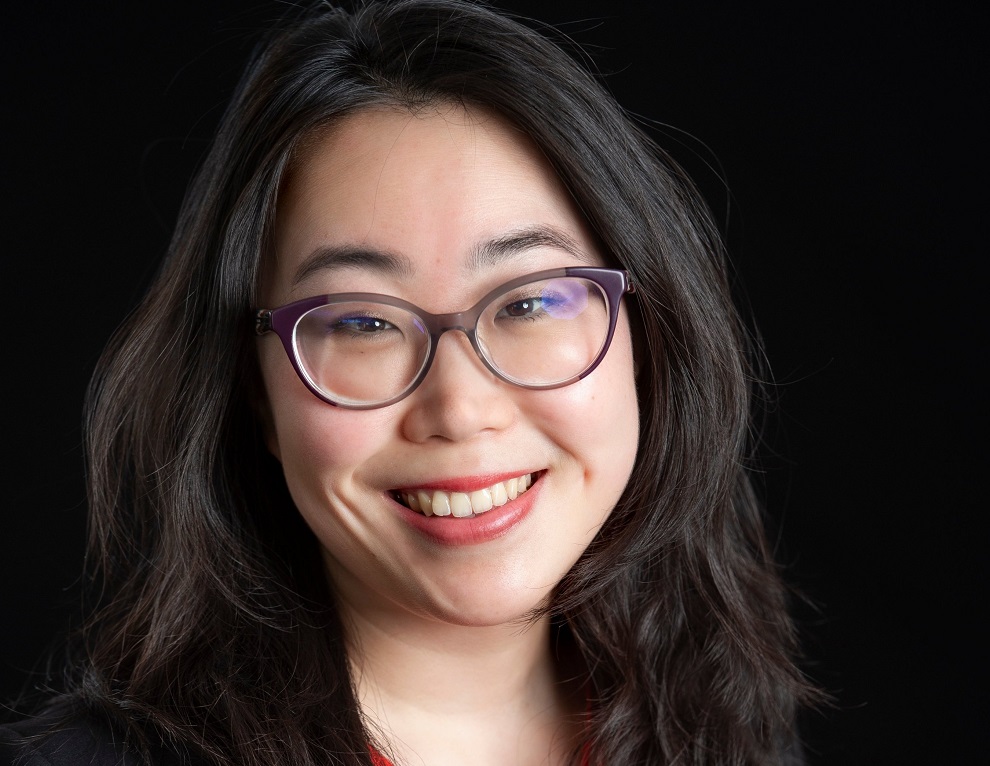
Photo: Christine Keung
Cities say they want to be equitable – San Jose is proving it
26 August 2021
by Sarah Wray
The pandemic and its disproportionate impact on some communities has brought a fresh focus on equity in the US and elsewhere. Barely a city announcement now passes without the mention of equity, and rightly so. While efforts are being ploughed into making cities more equitable, specifics about what that means and how it is measured are harder to come by.
The City of San Jose has set up a crack data team to do exactly that, led by Christine Keung.
Keung joined the City of San Jose in the middle of the pandemic as the Chief Data Officer in the Mayor’s Office of Technology and Innovation. In just a year, her team has grown to 20 people. The work, which is supported by the Knight Foundation, is gaining attention not only internally but also from external organisations who want to commission the team.
The role is Keung’s first in the public sector, straight out of Harvard Business School. She was a Fulbright Scholar and previously worked for hedge fund Bridgewater Associates and for tech company Dropbox.
Keung is bringing much of what she learned from these fast-moving companies to government, including the importance of a high level of rigour and data quality.
“Cities often don’t use data to drive performance,” Keung comments. “But when I think about performance as a civil servant, I think in terms of equity because one of the really special things about working in the public sector is the fact that we actually have a mandate to address everyone equally. The private sector doesn’t have that mandate – it’s all about customer segmentation. This is a really good opportunity for me to try to marry the mandate with the kind of practice that I’ve seen work.”
Data sources
One key thing the team does differently is looking beyond survey and census data, as Keung points out that these alone are not representative enough and are at a fixed point in time. The focus is on using ‘production data’ from city administration systems.
This is an “untapped, robust, and flexible data source,” she says. “Often, if you want to work on equity, you have to just change the source.”
Along with former Harvard data scientist Matthew Finney, Keung developed a three-step Data Equity Framework, which is now being gradually rolled out.
The first step is to define the equity objective and what represents an equitable outcome for the department and programmes. Next is to agree an equity metric to measure the objective. The third step is monitoring, evaluation and training staff within departments for long-term impact.
One of the first pilots was with San Jose’s department of Parks, Recreation and Neighborhood Services (PRNS) to understand the distribution of programme scholarships for young people. The programmes provide play activities, homework assistance and summer camps.
Keung says: “This is giving kids a place to go after school and all weekend so I consider it a core safety net for families.”
Access is based on free and reduced lunch eligibility which is set federally. Keung notes that in San Jose and the broader Silicon Valley area, a family can have a significantly higher income and still be considered impoverished.
“I already knew that we’re analysing a programme where we’re not even meeting the total need,” Keung said. “So we took a complete 360, and we changed our data source.”
Instead of looking at surveys and census information, the city began looking at ten years of registration data on the scholarships, which delivered several new insights that can drive the future design of the programme.
Following a 2015 decision to remove scholarship caps to reduce barriers to entry, metrics included the amount of money redeemed by families and retention rates. These looked like success but didn’t give the full picture.
“What we ended up seeing was the fact that even when you remove barriers, it basically serves the families who already knew about the programmes better,” Keung said.
The data showed the programme was serving fewer unique individuals and a shrinking percentage of those who had never received help before.
“That’s the kind of nuance that is necessary to have conversations around equity, that traditional data from surveys and the census just can’t answer.”
Changes being implemented based on this include beginning to collect race and possibly income data. The latter could offer a new way to define eligibility.
Further, the programme is planning to trial a Facebook advertisement campaign to reach more of the right people and meet them where they’re more likely to be.
Measure what matters
Following the PRNS pilot, the Equity Framework is being applied to several more departments and projects.
“We focus on safety net programmes, and the programmes that impact the most residents, and also where I think data can shed light on how to meet the deeper need,” Keung says, noting that while initially she had to knock on a lot of doors, demand for the data equity work is now very high.
The process starts with talking to department leads and carrying out an exploratory data analysis. After extracting administrative data and cleaning and processing it comes a baseline assessment, including a summary of key trends and identification of any additional data sources required, such as census figures or geographic information system (GIS) data.
“What happens sometimes in government is we get pushed so hard to set goals without the context required to set good goals. We have to measure what matters. Sometimes that requires talking to the people we’re serving, but also being informed when we have those conversations,” explains Keung.
As well as basing the data work on insights from experts within the departments, each project has a cross-functional taskforce which includes staff from IT, communications and the Office of Racial Equity. It also brings in community groups and other stakeholders who are engaged with issues on the ground.
The PRNS programme includes representatives who oversee the scholarship programmes.
Keung says: “They bring a lot of nuance to the work. They’re the ones who are working with families. They have to be there.”
Wider engagement is also a priority. To date, the team has contacted over 300 community organisations and given over 65 presentations to community groups, with a particular focus on those that serve lower-income families and young people.
“It’s not just about the data; it’s about what we’ve learned about the programmes. The community engagement piece has to be there, and there has to be parity.”
Through the PRNS pilot, several community organisations are now helping deliver information flyers door to door on how families can apply for new federal funds to cover childcare costs.
Keung comments: “Data helped us understand where the gaps are, and allowed us to be targeted, but we still did the work that civil servants should be doing anyway, which is making phone calls, making sure folks are showing up and making sure folks are feeling heard.”
Another data equity project focused on the San José 311 programme, the city’s non-emergency service system, to ensure it is accessible to everyone and that services to fix potholes, streetlights and respond to abandoned vehicles are delivered in a timely and equitable fashion.
Work with the San Jose Fire Department aims to improve service level agreements (SLAs) for wildfires. The team is applying predictive models to help the fire department understand staffing needs.
The Data Equity team is also turning its attention to homelessness and helping the Housing Department assess how equitable access to grant programmes is, based on race.
A separate project is using census and 311 data to provide an impact assessment to help inform initiatives to make homes more affordable for working class families.
Keung said: “We’re very comprehensive in how we try to answer the sticky questions, because we think the best solutions are in the nuance. The best solution for residents might actually be somewhere in the middle.”
In demand
While the city is taking some lessons from the private sector and applying them to government, the success of the data equity effort is gaining attention of its own beyond City Hall.
The team has been commissioned by the San José Downtown Association (SJDA) to use data to drive more equitable recovery from the pandemic. This includes understanding the make-up of business owners within SJDA zip codes who received COVID-19 relief from the US Small Business Administration (SBA) and identifying barriers to access for business owners who did not receive federal assistance.
“Small businesses are a really powerful engine for economic mobility,” says Keung. “Being able to execute on the mandate of this organisation – making it as easy as possible to start a business in San Jose and set them up for success – is going to drive equity.”
She adds: “When I think about equity, it’s not just about meeting the needs of the people who just happen to know about you but also everybody else that we’ve missed.”
Using more detailed data brings risks, and ensuring compliance with the municipal privacy policy and the state privacy policy is core to the data equity team’s work. Ethics is, too, which includes remaining mindful of the potential for unintended consequences.
Following a “rigorous hiring process”, those who join the team have a mandated reading list on ethics “before they even touch the data”. This includes chapters from Automating Inequality by Virginia Eubanks.
To practise what they preach, the data equity team is also held to account.
“Analysis, dashboards and presentations – that’s not success. If we’re not able to take those analyses and translate them into output and tangible outcomes for our residents, we have failed,” Keung says. “I talk about this with my team a lot. Public service is not just showing up and doing some work; we need to be strategic.”











